It's the guns.
Gun violence touches every corner of America. But where there are fewer guns, there are fewer gun deaths.
Scroll down to learn why
Check out our new campaign Working On It 🧠
Gun violence touches every corner of America. But where there are fewer guns, there are fewer gun deaths.
The United States is in the midst of a gun violence epidemic. On the average day in America, more than 130 people are killed by gun violence, and many more are wounded.
We have — by far — the highest rate of gun violence in the developed world.
Not coincidentally, the United States also leads the world in another statistic — the number of guns in everyday people’s hands.
Put the two together, and the picture becomes clear.
It’s the guns.
OK, but people have guns for a reason, right?
Yes, most people who buy a gun say they’re getting it to protect themselves and their family. But people who live with gun owners are 7x more likely to be shot by a spouse or intimate partner.
And when the going gets tough, there’s no evidence that carrying a gun helps. In a robbery or an assault, studies show people without a gun are just as likely to escape harm as people who are carrying one.
In fact in some cases, wielding a gun makes it more likely you’ll be injured.
Still, what’s the harm in having a gun?
Let’s break that question down. Which do you want to hit first?
What’s the danger to me?
Living in a house with a gun doubles the chance of dying by homicide. That gap persists even after controlling for other factors, including whether people in the home use drugs or have gotten in fights before.
The even bigger risk? Having a gun dramatically increases the likelihood that you’ll kill yourself. In fact, in the year after someone buys a handgun, their leading cause of death is suicide.
Just having a gun in a home more than triples the risk of suicide for people in the home. The risk for kids is even higher.
Not with a gun. A California study showed that women who purchased a gun were 2 times more likely to die by firearm homicide than women who didn’t own guns.
What’s more, having a gun in a house makes a domestic violence dispute five times more likely to turn deadly for women.
And on top of all that, women who buy a handgun are 35 times more likely to end their own lives with a firearm.
Having a gun doesn’t keep women safe — it puts them at risk.
Not with a gun. Research suggests you’re more likely to be injured after fighting off an attacker with a firearm. And when confronting an active shooter, it’s rarely a “good guy with a gun” that saves the day — it’s most often an unarmed bystander.
Meanwhile, it’s men who are most often the victims of gun violence. For every four murdered men, three were killed by guns. And having a gun around also increases the risk of suicide. Men who purchased a handgun are nearly 8 times more likely to end their own lives with a firearm.
Break the data down by race and the picture is even clearer: Black men are at highest risk of gun homicide. White men — particularly older white men — make up the bulk of gun suicides.
Many men buy guns because they want to keep their families safe. But the reality is that the gun they buy for protection is far more likely to be used against themselves or their loved ones.
With hate crimes on the rise — and more than 20 percent targeting LGBTQ+ people — it makes sense to be worried about safety. But getting a gun is likely to increase the danger.
As we talked about earlier, guns aren’t very effective in self-defense.
And for people already at risk for suicide — nearly half of LGBTQ+ youth have considered ending their lives — guns dramatically raise the risk of death.
It’s understandable why you might feel unsafe. The statistics are bleak.
Black people make up just 14 percent of the U.S. population, but comprise more than half of all homicide victims. Latino kids and teens are at least three times as likely as white children to have experienced a gun homicide in their community in the last year. And AAPI communities are seeing a dramatic uptick in hate crimes.
But a gun won’t make you safer. The data are clear: the presence of a firearm is linked to a higher risk for suicide and gun violence in the home, it doesn’t add any protective benefit outside the home.
Children are especially at risk. Suicide rates for children of color jumped 25 percent between 1999 and 2020.
And Asian and Pacific Islander young people have the fastest-rising firearm suicide rate of any group, growing by 168% between 2011 and 2020.
Getting a gun may feel like the only choice you have to stay safe. But it’s far more likely to hurt you and the ones you love.
If you or someone you know is struggling with their mental health or experiencing suicidal ideation, call or text 988 to reach the free Suicide and Crisis Lifeline.
You mentioned suicide earlier. Aren’t people who want to die by suicide going to find a way to do it, one way or another?
That’s a common belief. But it’s wrong. Nine of 10 people who attempt suicide survive, and people who survive a suicide attempt overwhelmingly do not go on to die by suicide.
The exception, of course, is when someone tries to kill themselves with a gun. When a firearm is involved, 90 percent of suicide attempts end in death.
If you or someone you know is struggling with their mental health or experiencing suicidal ideation, call or text 988 to reach the free Suicide and Crisis Lifeline.
So it’s not that guns make people want to kill themselves — it’s that guns make suicide attempts more likely to end in death?
Exactly. There’s state-by-state evidence in support of this, too. States with more guns have a much higher suicide death rate. But if you factor out firearm suicides, the correlation disappears.
Guns don’t make someone suicidal. But the presence of a gun does make it very likely that a suicide attempt will result in death. That’s why suicide rates are four times higher for kids who live in homes with guns. It’s why the risk of suicide for women who own guns is 35x higher than for women who don’t. It’s why first-time male gun owners are 8 times more likely to die by gun suicide compared to non-owners.
When a gun is present, everything can change in an instant.
The facts are clear: It’s the guns.
If you or someone you know is struggling with their mental health or experiencing suicidal ideation, call or text 988 to reach the free Suicide and Crisis Lifeline.
Why are kids and teens at greater risk with a gun around?
Gun violence is now the leading cause of death for children and teens — surpassing even car accidents.
More than half of those deaths were homicides — and at the same time, gun suicides are reaching a 20-year high.
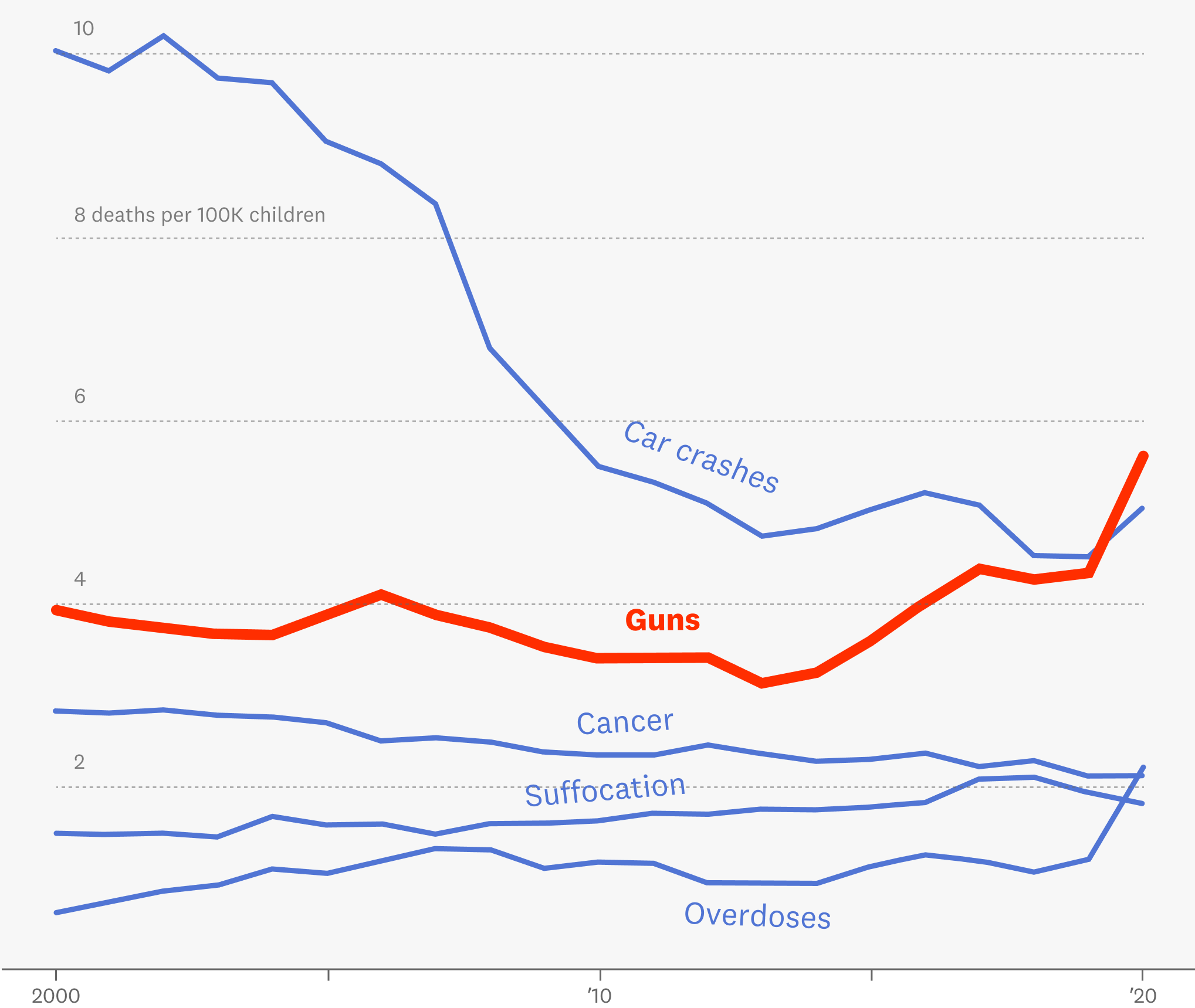
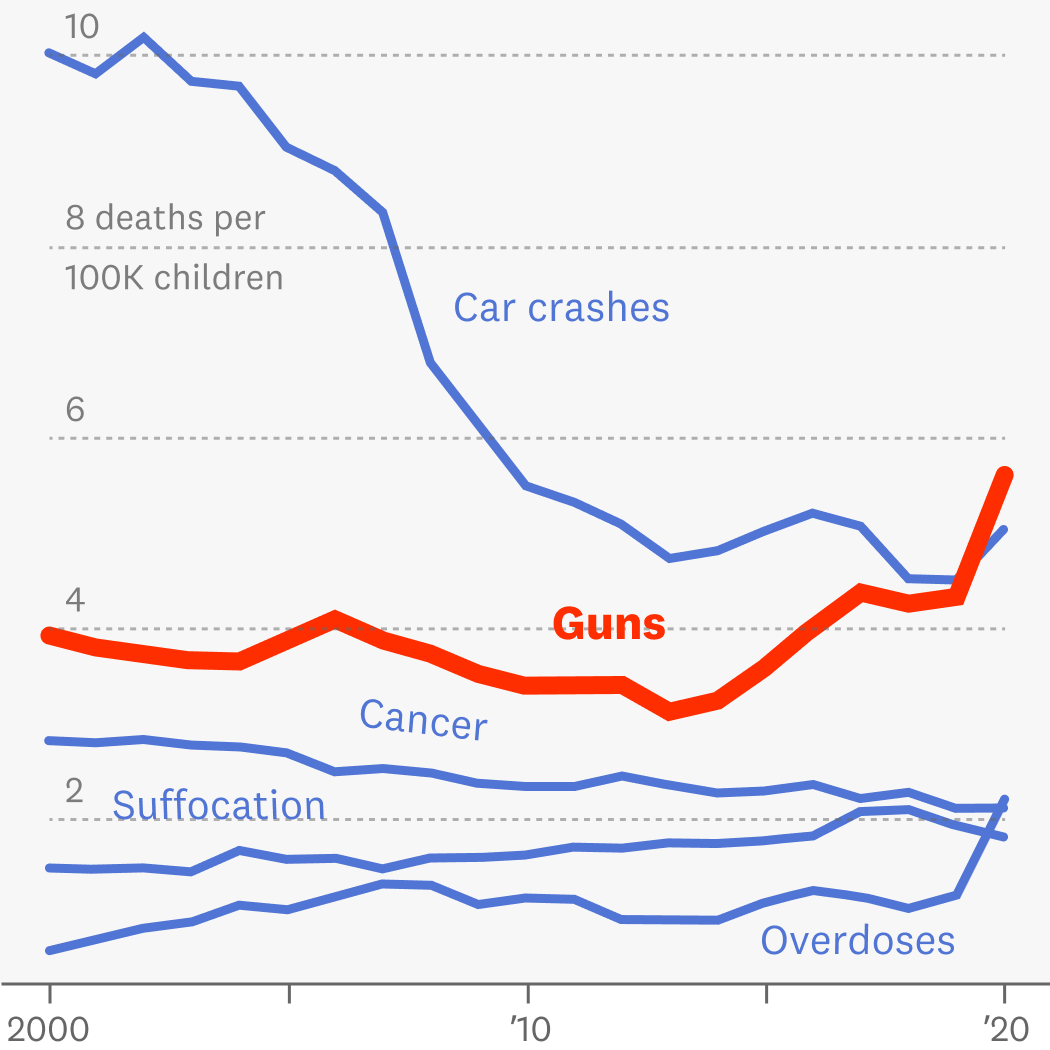
The impact of gun violence on kids and teens goes beyond the number who are killed or wounded: About 3 million children witness gun violence every year. And exposure to community violence is linked to adverse outcomes, including post traumatic stress symptoms, worsened school performance, and declines in cognitive functioning.
Where there are more guns, children and teens are less safe.
If you or someone you know is struggling with their mental health or experiencing suicidal ideation, call or text 988 to reach the free Suicide and Crisis Lifeline.
Doesn’t secure gun storage solve this problem?
There’s no question: If you have a gun, it should be stored locked, unloaded and separate from ammunition.
But while most gun owners see themselves as responsible, more than half don’t store all of their guns safely. And studies have shown that nearly 40% of parents in homes with guns believe their kids can’t access a gun, but the kids can.
That has deadly consequences. An analysis from The Trace found that between May 2022 and April 2023, there were more than 160 accidental shootings by children under 13. More than two-thirds of the gunshots were self-inflicted and the median age for kids who fired the gun was age 4.
Nearly 5 million kids and teens live with unsecured guns. Not only does this risk result in shootings at home, it can also impact the likelihood of school shootings. In three-quarters of school shootings, the shooter used a firearm taken from their home or a friend’s home.
If you or someone you know is struggling with their mental health or experiencing suicidal ideation, call or text 988 to reach the free Suicide and Crisis Lifeline.
Who’s most at risk?
Every child in America is at risk of experiencing gun violence — but Black children have the highest risk. Black children and teens were roughly five times as likely as their White counterparts to die from gunfire in 2021.
And suicide is growing quickly among young people of color, jumping 25 percent between 1999 and 2020. Black youth have the fastest growing suicide rate compared to their peers of other racial and ethnic groups, and firearms are the most common method of suicide among Black boys aged 19 and younger.
Lesbian, gay, bisexual and transgender kids have the highest risk of attempting suicide — and as we’ve said before, nine of 10 suicides by gun are fatal.
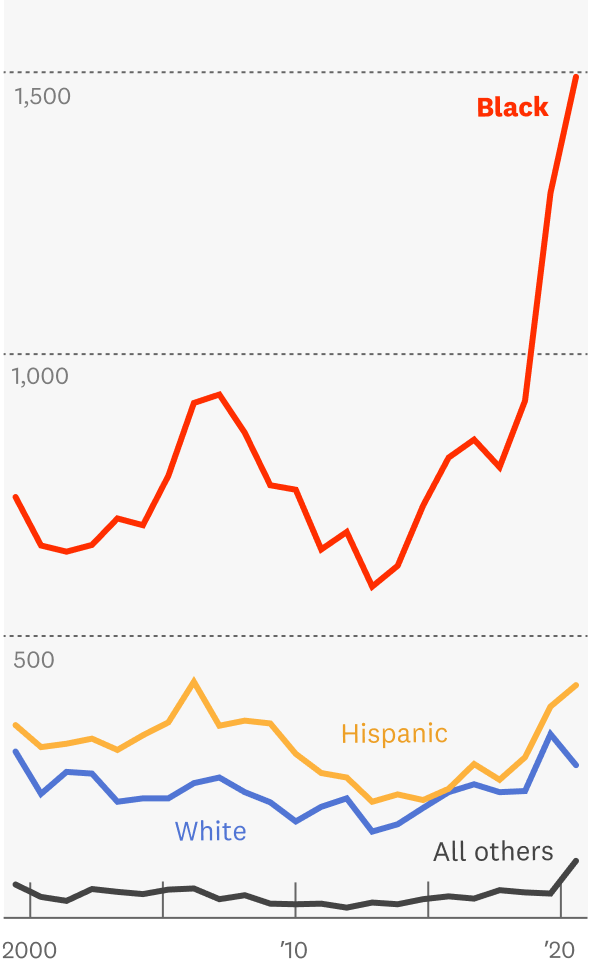
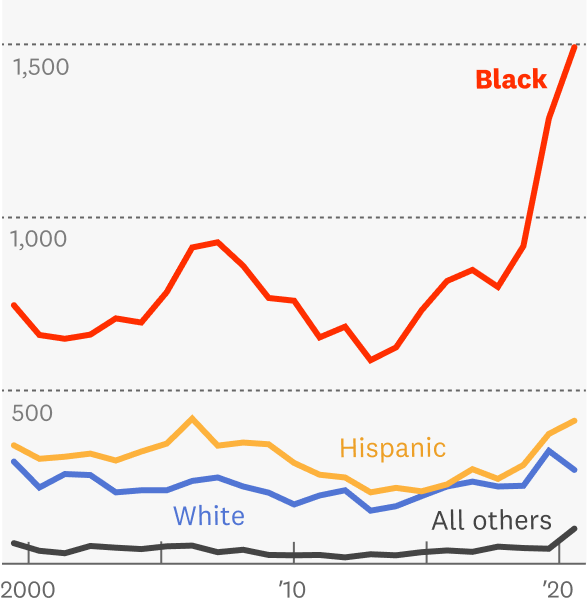
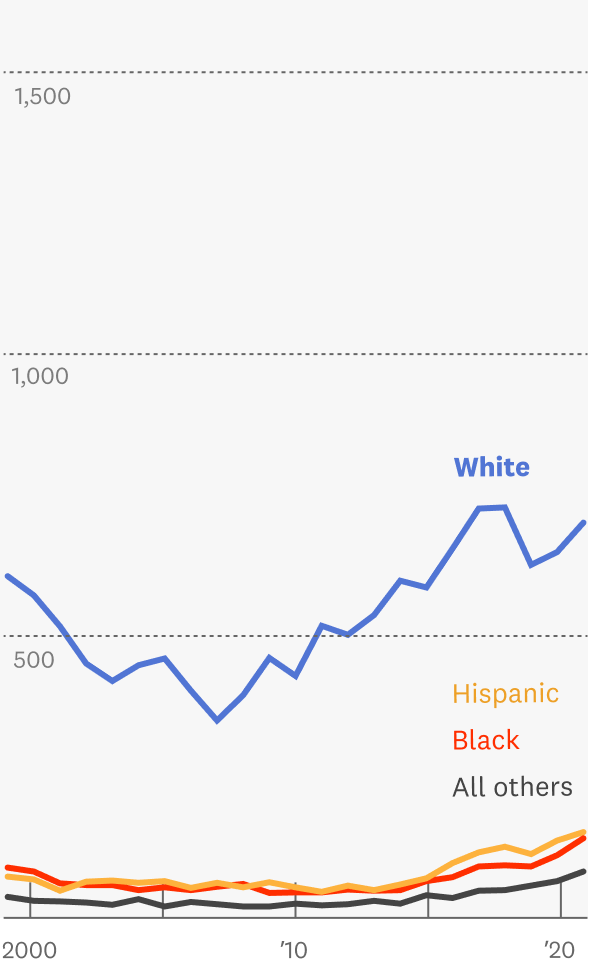
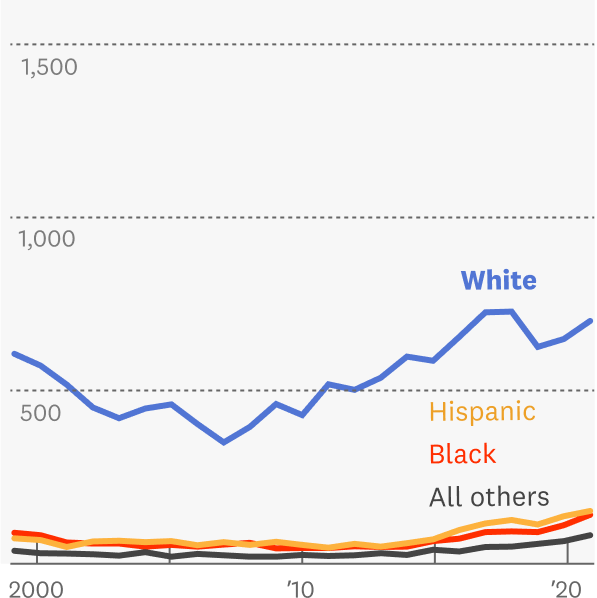
If you or someone you know is struggling with their mental health or experiencing suicidal ideation, call or text 988 to reach the free Suicide and Crisis Lifeline.
How does getting a gun put the broader community in more danger?
Simply put, communities with more guns have more gun deaths. They see more suicides and more homicides; they also see more mass shootings and fatal encounters with police.
The racial differences are pretty stark, especially for children. Just under 50 percent of Latino youth — and more than half of Black kids — lived less than a mile from a gun homicide in the past year.
What about mass shootings?
Having more guns doesn’t protect us from active shooters — in fact, it makes them more likely.
For every 10 percent increase in gun ownership in a state, research shows the rate of mass shootings goes up 35 percent.
Does that mean we need more people with guns?
Getting a gun doesn’t solve the problem. States with permissive concealed-carry laws — meaning places where more people are carrying guns in public — actually have more violent crime, even when controlling for other factors.
A 2023 study found that counties that issued more concealed carry licenses had more homicides the following year, meaning that where more people are carrying guns, more people are killed.
So… it’s the guns?
Yes. It’s the guns.
They’re rarely used in defense, and ineffective when they are. Having one in your home dramatically increases the risk you could lose your life to suicide, or that someone you love will get hurt.
And on aggregate, they contribute to making our communities less safe.
Guns make young people less safe.
Guns make women less safe.
Guns make men less safe.
Guns make Latino people less safe.
Guns make Black people less safe.
Guns make Indigenous people less safe.
Guns make AAPI people less safe.
Guns make people with mental illness less safe.
Guns make LGBTQ+ people less safe.
Guns make everyone less safe.
Sign up for Project Unloaded’s email and text lists.